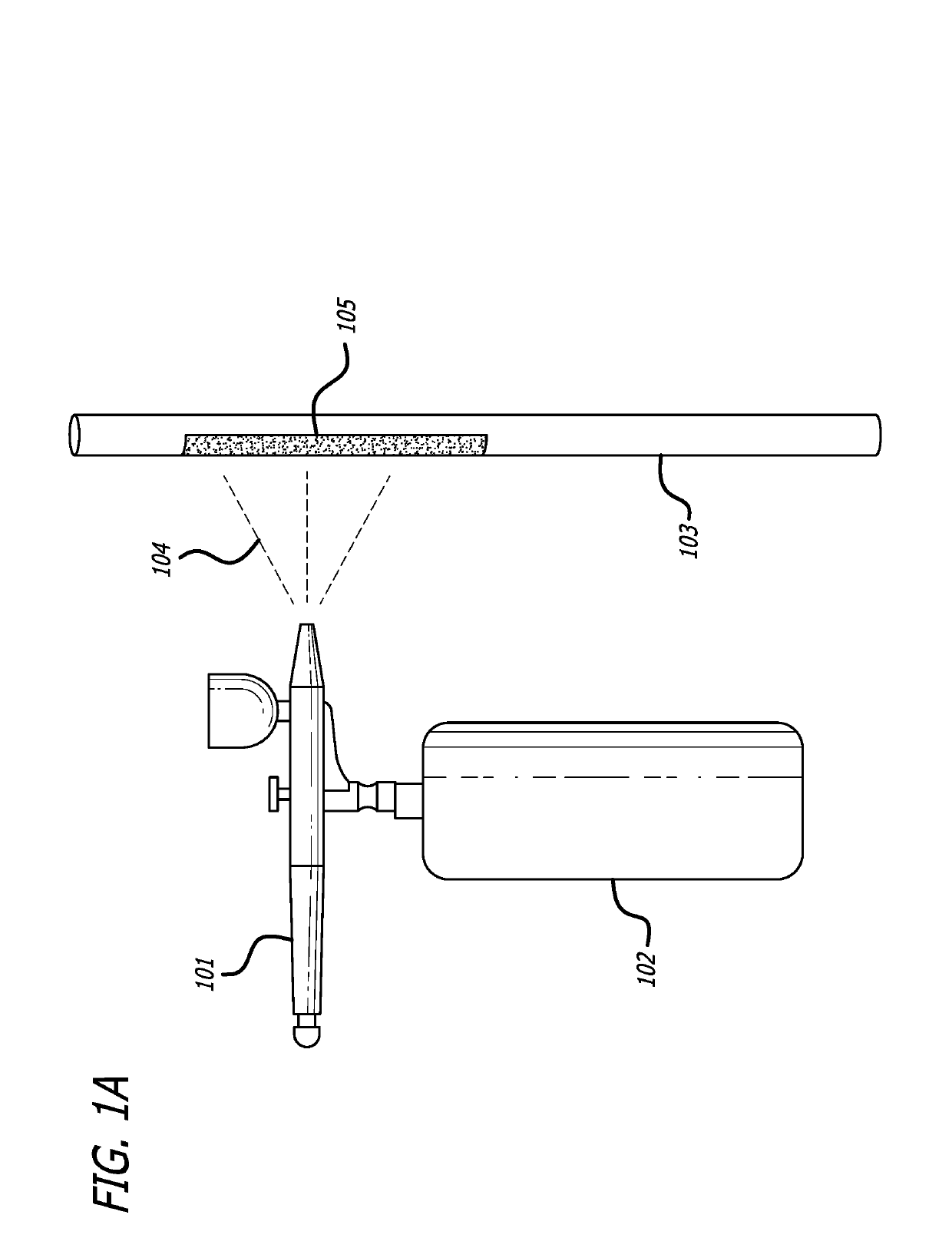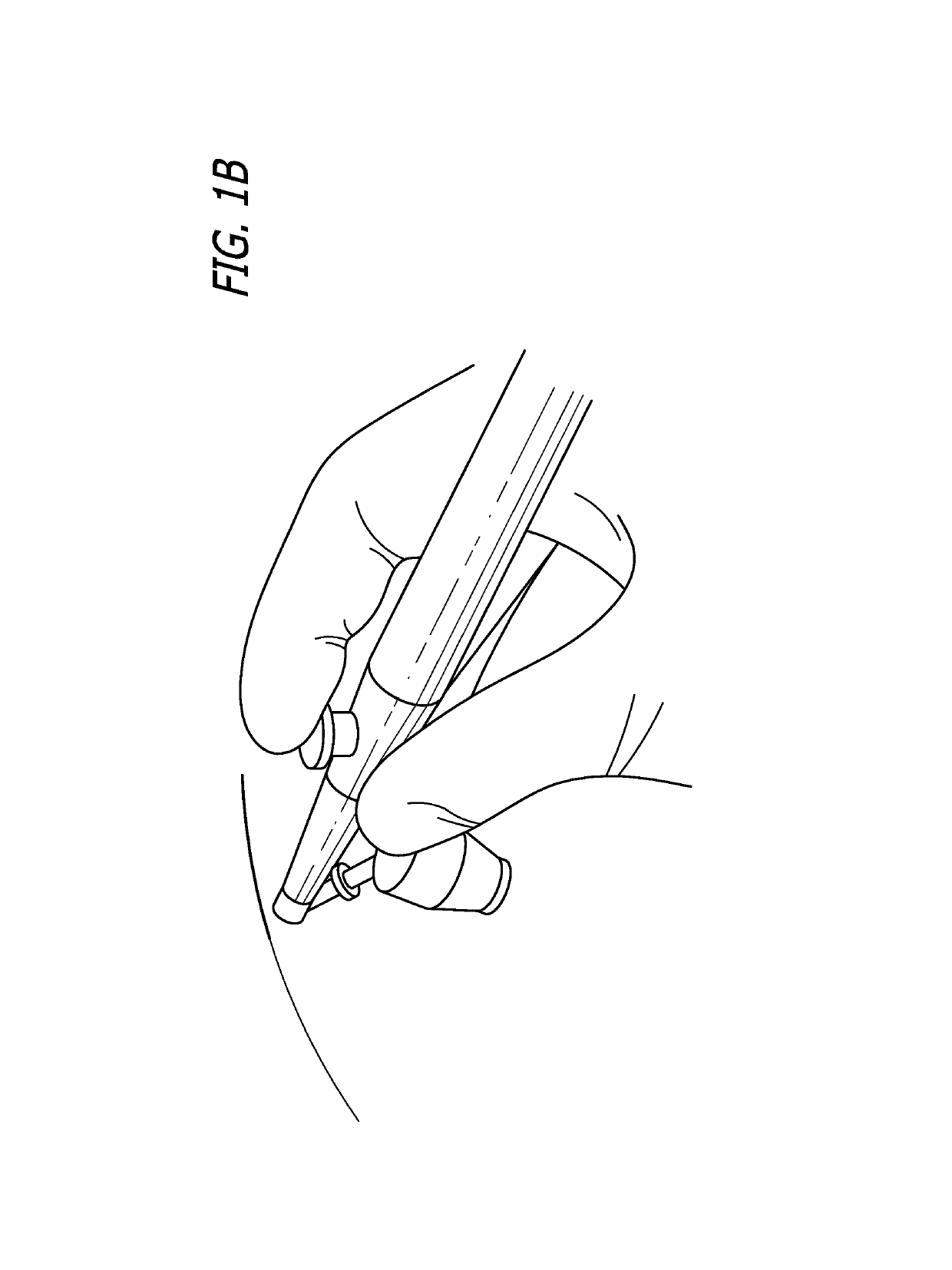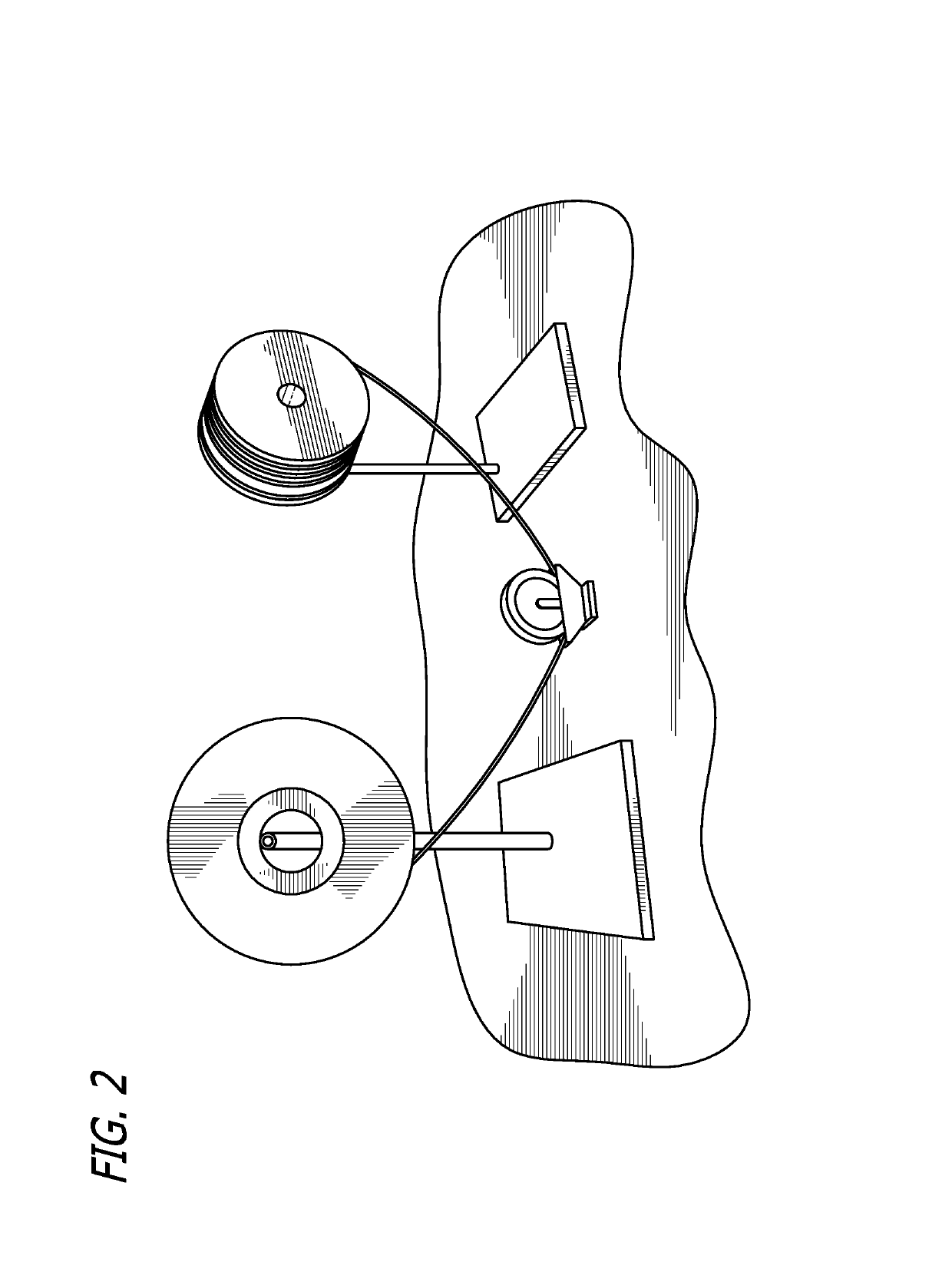Electromagnetic wave-induced localized heating of CNT filled polymer composites for enhanced inter-bead diffusive bonding of fused filament fabricated parts
a technology of cnt filling and polymer composites, which is applied in the direction of additive manufacturing processes, manufacturing tools, transportation and packaging, etc., can solve the problems of reduced mechanical properties and incomplete welding of beads, and achieve the effects of enhancing the inter-bead diffusive bonding of fused filament fabricated parts, reducing the overall strength of the final 3d printed part, and increasing the inter-bead bond strength
- Summary
- Abstract
- Description
- Claims
- Application Information
AI Technical Summary
Benefits of technology
Problems solved by technology
Method used
Image
Examples
Embodiment Construction
[0086]The present invention embodies a technique for incorporating microwave absorbing nanomaterials (carbon nanotubes (CNTs)) onto the surface (or throughout the volume) of 3D printer polymer filament to increase the inter-bead bond strength following a post microwave irradiation treatment and / or in-situ focused microwave beam during printing. In embodiments of the present invention, additive manufacturing techniques, in which successive layers are laid down additively into the desired shape, are utilized by 3D printers to manufacture thermoplastic parts. These 3D printers can print intricate product designs much faster than regular machining techniques; however, the strength of the final part may be compromised when compared to parts produced through conventional machining methods. A treatment process of the present invention is used to address the compromise of the strength of the produced part as compared to parts produced through conventional machining methods. The treatment pr...
PUM
| Property | Measurement | Unit |
|---|---|---|
| thickness | aaaaa | aaaaa |
| thickness | aaaaa | aaaaa |
| wt % | aaaaa | aaaaa |
Abstract
Description
Claims
Application Information
 Login to View More
Login to View More - R&D
- Intellectual Property
- Life Sciences
- Materials
- Tech Scout
- Unparalleled Data Quality
- Higher Quality Content
- 60% Fewer Hallucinations
Browse by: Latest US Patents, China's latest patents, Technical Efficacy Thesaurus, Application Domain, Technology Topic, Popular Technical Reports.
© 2025 PatSnap. All rights reserved.Legal|Privacy policy|Modern Slavery Act Transparency Statement|Sitemap|About US| Contact US: help@patsnap.com



